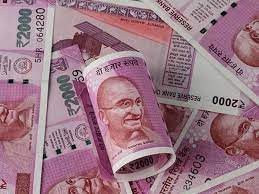The RBI has taken the move to withdraw Rs. 2000 notes from circulation which has attracted much speculation and questions on the move.
The current RBI Governor Mr. Shaktikanta Das has recently briefed answers to various questions on the withdrawal of Rs. 2000 notes.
According to Das, the main goal of introducing the Rs 2,000 was to immediately replace the value of the currency that was being removed from circulation as a result of demonetization.
The decision was made to withdraw these notes because that objective has been achieved, and there are now sufficient notes of other denominations, he said.
The Governor noted that printing of those currencies has also been halted.
Das asked people to view this specific activity as a component of the Reserve Bank of India’s currency management operation.
According to Das, the RBI will determine whether to extend the September 30 deadline after determining how many of these notes are returned to banks.
Asked why there was a deadline for exchanging these notes since they would still be considered legal tender, he responded that without a set date, people wouldn’t take the process seriously, and it wouldn’t come to a conclusion.
Without a date, it might easily turn into an unending procedure, he continued.
In response to the difficulties people might encounter when exchanging Rs 2,000 notes, Das remarked, “I do not anticipate a rush to bank branches. There’s no need to rush to the bank. There are four months left,” he remarked.
“We anticipate receiving the majority of the notes by September 30. People both inside and outside of India can rest assured that we will be considerate of any challenges you may encounter. We will make an effort to address people’s problems, the governor added.
There is no need to be concerned because the system has more than enough printed notes, according to Das. He also denied concerns about how the change may affect the economy.
The public’s demand will determine whether more Rs. 500 notes are issued, he said.
In response to a question about the difficulties individuals had using the highest value note, Das stated, “Many stores prior also didn’t accept Rs 2,000 notes. They pushed for electronic payments. Earlier there was a reluctance to take Rs 2,000 bills, which has gotten worse now.
“Indian currencies continue to be reliable. These notes’ security has not been compromised, according to Das.
The legal tender status of the Rs 2000 note has been emphasized by the RBI. It implies that the Rs. 2000 note can be used for everyday transactions, for the purchase of products and services, etc. The most recent circular, however, makes no mention of what will occur if Rs 2000 notes are not exchanged or deposited in banks by the deadline of September 30.
The number of Rs 2000 notes that are removed from circulation will determine what procedural steps are done after the deadline of September 30, 2023, or whether a deadline extension is feasible, according to RBI Governor Shaktikanta Das in a media interview.
Here are two examples of what occurred in the past when the RBI removed coins and notes from circulation.
Case I: The RBI decided to stop issuing some banknotes before 2005 in 2013–2014. It was accomplished because newer notes with greater security features were available, and such notes had fewer security features.
According to the RBI’s frequently asked questions on Indian currency (updated through May 17, 2022), the ability to exchange pre-2005 notes is available in some offices of the RBI. It does not, however, mean that banks cannot accept deposits of banknotes dated before 2005 to credit the funds to the customer’s account. In a press release dated December 19, 2016, the RBI reaffirmed this.
According to the RBI’s aforementioned FAQs, someone who has an old pre-2005 banknote in the amount of, say, Rs. 10 or Rs. 50 or Rs. 100 can either deposit it in their bank account or exchange it at the designated RBI locations. Be aware, though, that old Rs. 500 and Rs. 1000 notes cannot be deposited in a bank account or exchanged. It is because these notes were demonetized and were no longer valid currency as of November 8, 2016, at midnight.
Case II: The central bank performed a comparable experiment using 25-paise coins. Twenty-five paise coins were taken out of circulation with effect from June 30, 2011, and as a result, they are no longer considered legal tender, according to the same FAQs as those previously stated. Coins with values lower than 25 paise were taken out of circulation much earlier. All other denominations of coins in different sizes, themes, and designs that the Indian government continues to mint by the Coinage Act of 2011 and issue to the public periodically for circulation remain legal tender.
What will happen beyond September 30 is not made apparent by the RBI’s use of the phrase “encouraged to.” While the 25 paise coin is no longer considered legal tender in the two cases mentioned above, the pre-2005 banknotes still are, according to the RBI’s FAQs.








